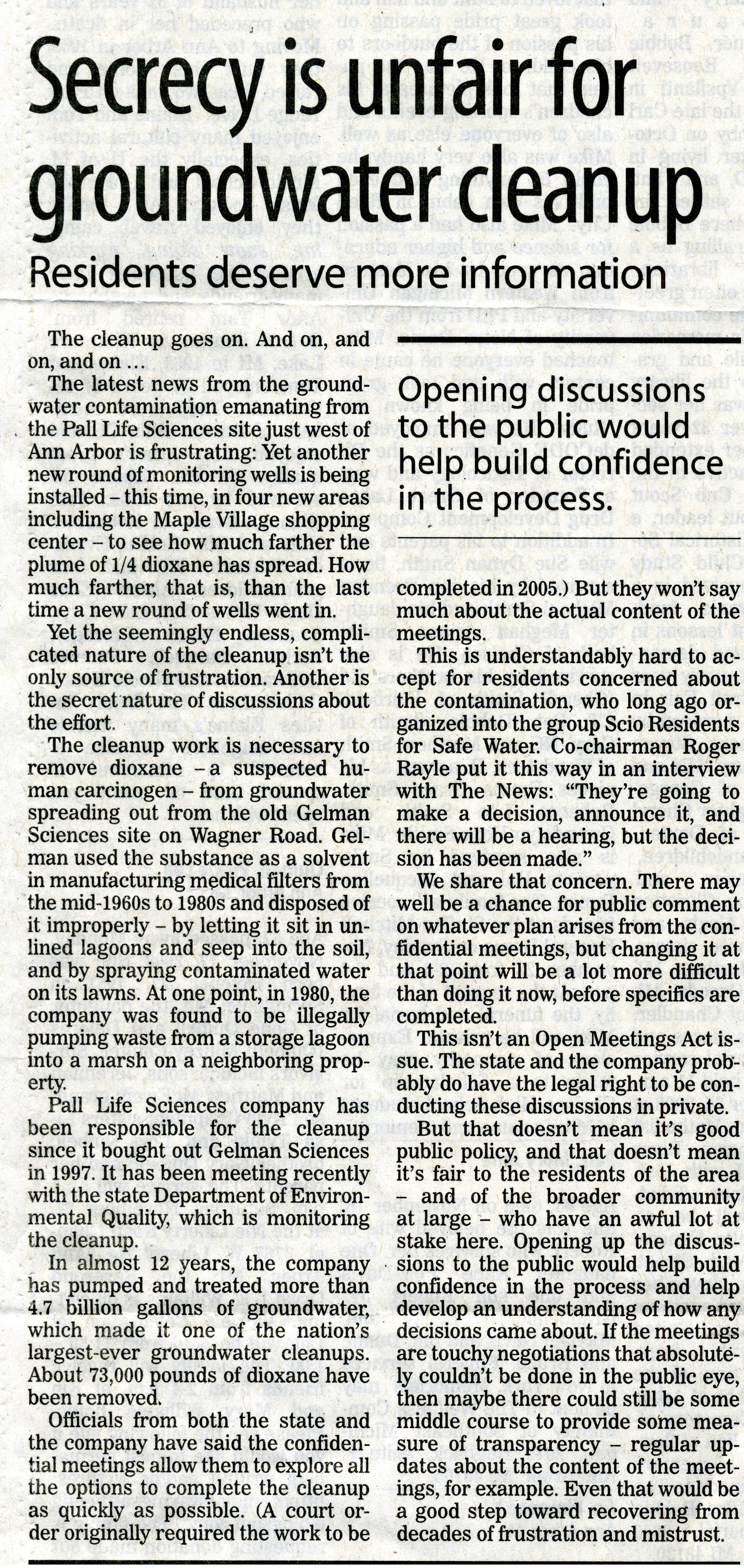Secrecy Is Unfair For Groundwater Cleanup

Secrecy is unfair for groundwater cleanup
Residents deserve more information
Opening discussions to the public would help build confidence in the process.
The cleanup goes on. And on, and on, and on ...
The latest news from the ground-water contamination emanating from the Pall Life Sciences site just west of Ann Arbor is frustrating: Yet another new round of monitoring wells is being installed - this time, in four new areas including the Maple Village shopping center - to see how much farther the plume of 1/4 dioxane has spread. How much farther, that is, than the last time a new round of wells went in.
Yet the seemingly endless, complicated nature of the cleanup isn’t the only source of frustration. Another is the secret nature of discussions about the effort.
The cleanup work is necessary to remove dioxane -a suspected human carcinogen - from groundwater spreading out from the old Gelman Sciences site on Wagner Road. Gelman used the substance as a solvent in manufacturing medical filters from the mid-1960s to 1980s and disposed of it improperly - by letting it sit in unlined lagoons and seep into the soil, and by spraying contaminated water on its lawns. At one point, in 1980, the company was found to be illegally pumping waste from a storage lagoon into a marsh on a neighboring property.
Pall Life Sciences company has been responsible for the cleanup since it bought out Gelman Sciences in 1997. It has been meeting recently with the state Department of Environmental Quality, which is monitoring the cleanup.
In almost 12 years, the company has pumped and treated more than 4.7 billion gallons of groundwater, which made it one of the nation’s largest-ever groundwater cleanups. About 73,000 pounds of dioxane have been removed.
Officials from both the state and the company have said the confidential meetings allow them to explore all the options to complete the cleanup as quickly as possible. (A court order originally required the work to be completed in 2005.) But they won’t say much about the actual content of the meetings.
This is understandably hard to accept for residents concerned about the contamination, who long ago organized into the group Scio Residents for Safe Water. Co-chairman Roger Rayle put it this way in an interview with The News: “They’re going to make a decision, announce it, and there will be a hearing, but the decision has been made.”
We share that concern. There may well be a chance for public comment on whatever plan arises from the confidential meetings, but changing it at that point will be a lot more difficult than doing it now, before specifics are completed.
This isn’t an Open Meetings Act issue. The state and the company probably do have the legal right to be conducting these discussions in private.
But that doesn’t mean it’s good public policy, and that doesn’t mean it’s fair to the residents of the area - and of the broader community at large - who have an awful lot at stake here. Opening up the discussions to the public would help build confidence in the process and help develop an understanding of how any decisions came about. If the meetings are touchy negotiations that absolutely couldn’t be done in the public eye, then maybe there could still be some middle course to provide some measure of transparency - regular updates about the content of the meetings, for example. Even that would be a good step toward recovering from decades of frustration and mistrust.